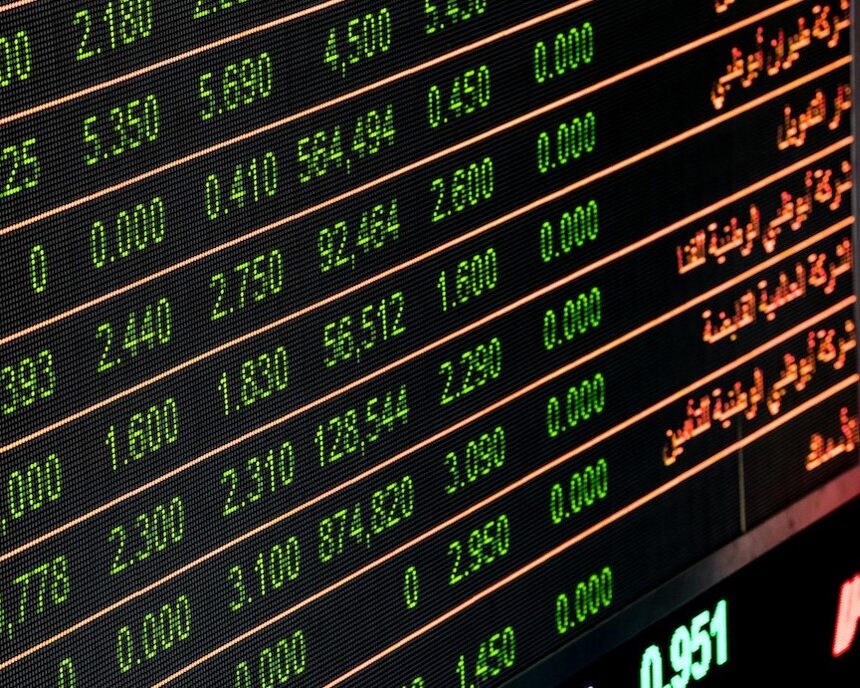Over the past decade, investors had to deal with a fair share of challenges given the significant developments that took place across global financial markets. These developments led to extreme periods of volatility across all asset classes (shares, bonds, and cash) and produced returns that were not within the historical long-term average for each type of financial instrument.
For example, the sharp decline in interest rates by the major central banks across the world coupled with the quantitative easing programmes for a large part of the last decade led to zero returns on cash and other money market instruments. There were also periods of time when some local and international banks across the eurozone also imposed ‘high balance fees’ on large balances of idle deposits by high-net-worth investors or corporate customers in order to offset the costs imposed of such idle holdings by the European Central Bank (ECB). Although this was an unprecedented measure, the situation lasted for such a long period of time that investors had become accustomed to the new reality that one cannot be in a position to earn a positive rate of interest on term deposits at the banks.
Likewise, the sharp decline in yields across the bond market at the start of the QE programme by the ECB in mid-2014 and the continued low to negative yields across many sovereign bonds for several years thereafter led to a major rally in bond prices. During this period, the jump in bond prices at times produced double-digit returns to investors. Such returns are normally associated with equities rather than fixed-income securities.
In fact, during the period between 2014 and 2018 many Maltese investors actively participated in new issuance of Malta Government Stocks and generated hefty capital gains within very short periods of time. This happened on such regular occasions that many investors were led to believe that such gains are normal for fixed-income instruments. This buoyant period for MGS’s is still regularly mentioned nowadays by several investors.
The extent of the abnormal circumstances across the bond markets over recent years is best explained by the 100-year bond issued by the Austrian Government first in 2017 at a measly 2.1 per cent coupon and then in 2020 at a lower coupon of a mere 0.88 per cent.
The extended bull market for bonds came to an end last year with international bonds and local sovereign bonds (MGS) registering double-digit declines in 2022 as the major central banks commenced a sharp tightening of monetary policy measures leading to the sharpest increase in interest rates in history. The 100-year Austrian Government bond for example saw its price tumble to below 40 per cent as a result of the steep rise in interest rates over the past 10 months.
In view of the unprecedented circumstances over the past decade which reversed rapidly in 2022, many investors seem to have failed to adjust to this normalised environment where asset classes are generating the returns that are typically associated with each asset class.
This brought to mind the 10, 5, 3 rule which gives a rough indication of the average rate of return across different asset classes.
Although there are no guaranteed returns on an annual basis, this rule of thumb indicates that one should expect 10 per cent returns from equities, five per cent returns from bonds and three per cent is the average rate of return that one usually gets from term deposits with banks or money market instruments such as Treasury bills.
Until a few months ago, for example, investors were still not in a position to generate positive returns from cash and other money market instruments. However, we are now seeing some local banks offering fixed deposits at three per cent per annum reflecting the recent upturn in the ECB’s deposit facility to 3.5 per cent. The Malta Government Treasury bill market, which has become highly popular for treasury management purposes, recently saw its average annual yield for three-month paper exceed 3.5 per cent. This was unheard of until a few months ago.
In the bond market, after a period of excessively low rates of interests which can also be depicted by the 30-year MGS launched in 2021 at a coupon of only 1.8 per cent, the returns are now more in line with those experienced prior to the extended period of monetary easing measures by the major global central banks. In fact, the Malta Government tapped the market on three occasions since October 2022 offering yields of four per cent to investors. Likewise, several euro denominated investment grade corporate bonds maturing in about 8-10 years are now also offering yields of around four per cent per annum.
The 10, 5, 3 rule can be combined with the rule of 72, which can help investors visualise the length of time it takes for each asset class to approximately double in value.
An average return of 10 per cent per annum for equities would result in a doubling in value after seven years. Likewise, this would imply a period of 14 years for bonds and 24 years for cash. While equities tend to produce much higher returns, there are greater risks associated with such instruments. On the other hand, cash generates low returns which may not be ideal for several investors who need to generate a certain level of income.
In view of these contrasting results, investors need to be well-aware of their overall expectations and objectives and ensure that their investment portfolios are aligned to such objectives and their risk appetite.
Read more of Mr Rizzo’s insights at Rizzo Farrugia (Stockbrokers)
The article contains public information only and is published solely for informational purposes. It should not be construed as a solicitation or an offer to buy or sell any securities or related financial instruments. No representation or warranty, either expressed or implied, is provided in relation to the accuracy, completeness or reliability of the information contained herein, nor is it intended to be a complete statement or summary of the securities, markets or developments referred to in this article. Rizzo, Farrugia & Co. (Stockbrokers) Ltd (“Rizzo Farrugia”) is under no obligation to update or keep current the information contained herein. Since the buying and selling of securities by any person is dependent on that person’s financial situation and an assessment of the suitability and appropriateness of the proposed transaction, no person should act upon any recommendation in this article without first obtaining investment advice. Rizzo Farrugia, its directors, the author of this article, other employees or clients may have or have had interests in the securities referred to herein and may at any time make purchases and/or sales in them as principal or agent. Furthermore, Rizzo Farrugia may have or have had a relationship with or may provide or has provided other services of a corporate nature to companies herein mentioned. Stock markets are volatile and subject to fluctuations which cannot be reasonably foreseen. Past performance is not necessarily indicative of future results. Foreign currency rates of exchange may adversely affect the value, price or income of any security mentioned in this article. Neither Rizzo Farrugia, nor any of its directors or employees accepts any liability for any loss or damage arising out of the use of all or any part of this article.
The bond market in 2026
In 2025, €717 million were issued on the Regulated Main Market of the Malta Stock Exchange
Institute of Directors training now available in Malta through ThinkTalent
By offering IoD’s globally respected curriculum, ThinkTalent is fulfilling its mission to be the definitive partner in strategic talent optimisation
Foreign bank participation in the MGS market
Strong institutional demand for Malta Government Stocks, shifting investor dynamics, and the growing role of international banks in MGS auctions







